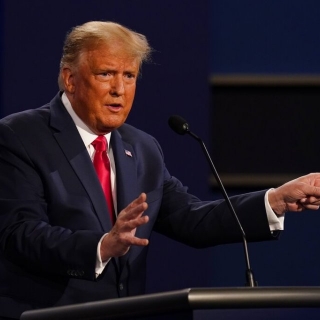


US President Donald Trump has confirmed that he will impose 25% tariffs on imports from Canada and Mexico, effective February 1. It remains to be seen whether crude oil, a significant import from these countries, will be included in the tariffs.
The tariffs are intended to address issues such as migration, fentanyl trafficking and trade imbalances. However, Nigel Green, CEO of deVere Group, a global financial advisory and asset management firm, warned that the move carries significant risks for investors worldwide.
The US imports around 40% of its crude oil, mainly from Canada. If oil is hit with tariffs, it could impact energy markets, leading to higher costs for businesses and consumers. This could potentially push inflation higher and hurt economic growth. Green suggested that energy markets, already fragile due to global supply constraints, could face unnecessary volatility, making fuel and transportation more expensive globally.
The tariff announcement also fuels uncertainty about trade policy, leading to potential market volatility. With Canada and Mexico planning to retaliate, global markets are bracing for potential turbulence. Investors with exposure to North American equities, currencies and sectors that rely on supply chains may need to reassess their positions. Green suggests investors consider diversifying their portfolios to protect themselves from increased volatility and potential trade disruptions. This can be achieved by increasing exposure to defensive sectors such as healthcare, utilities and consumer staples, as well as exploring alternative assets such as gold and real estate.
Certain industries are expected to feel the impact of these tariffs more than others. Manufacturing, automotive and consumer goods sectors that rely on cross-border supply chains could face higher costs, potentially impacting profitability. Agriculture could also be hurt if retaliatory tariffs target U.S. exports. Conversely, domestic energy producers, certain U.S.-based manufacturers and industries supported by protectionist policies could see short-term gains due to reduced competition. (AL)
Source: Investing.com
President Donald Trump said Wednesday he plans to send a single letter to over 150 countries outlining the tariff rate they will face, saying, "It's all going to be the same for everyone, for that gro...
The U.S. central bank will probably need to leave interest rates where they are for a while longer to ensure inflation stays low in the face of upward pressure from the Trump administration's tariffs,...
US President Donald Trump plans to impose tariffs of over 10% on smaller countries, including nations in Africa and the Caribbean, as the Associated Press reported. "We'll probably set one tariff for...
President Donald Trump warned on Monday that he would impose secondary tariffs of 100% on Russia if a peace deal with Ukraine isn't reached within 50 days. "We are going to be doing very severe tariff...
The European Union announced on Sunday that it will extend its suspension of countermeasures to U.S. tariffs until early August, aiming to pursue a negotiated settlement. This comes after President T...
The S&P 500 briefly touched an all-time high before hovering flat in the afternoon session, while the Nasdaq dipped 0.2% as investors weighed strong economic data against latest batch of corporate earnings. The Dow Jones, on the other hand was...
Gold (XAU/USD) is trading higher on Friday as investors remain focused on Fed expectations US economic data. At the time of writing, XAU/USD recovers above $3,350, pushing the price closer toward the upper boundary of a symmetrical triangle...
The case for a U.S. interest rate cut remains unresolved as Federal Reserve officials head into their policy meeting later this month, with data showing fresh signs of higher inflation and President Donald Trump intensifying his demands for lower...
 U.S. consumer prices increased by the most in five months in June amid higher costs for some goods, suggesting tariffs were starting to have an...
U.S. consumer prices increased by the most in five months in June amid higher costs for some goods, suggesting tariffs were starting to have an...
 European stocks erased early gains and closed mostly lower on Tuesday as markets continued to assess how potential tariffs from the US may hurt...
European stocks erased early gains and closed mostly lower on Tuesday as markets continued to assess how potential tariffs from the US may hurt...
 The U.S. central bank will probably need to leave interest rates where they are for a while longer to ensure inflation stays low in the face of...
The U.S. central bank will probably need to leave interest rates where they are for a while longer to ensure inflation stays low in the face of...
 The Producer Price Index (PPI) for final demand in the US rose 2.3% annually in June, according to data published by the US Bureau of Labor...
The Producer Price Index (PPI) for final demand in the US rose 2.3% annually in June, according to data published by the US Bureau of Labor...